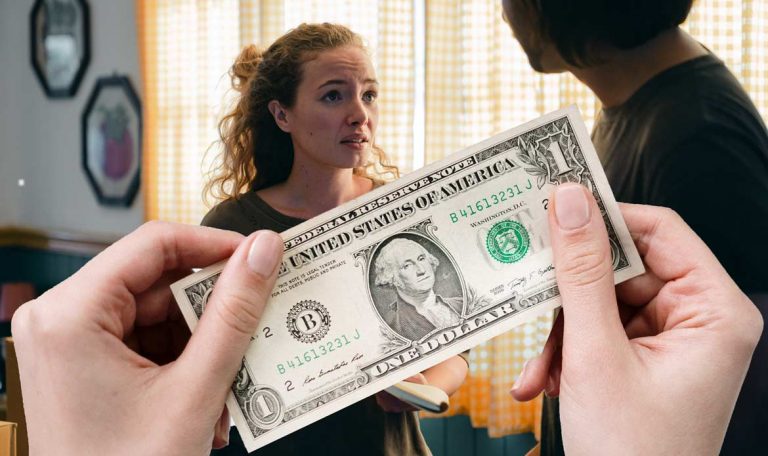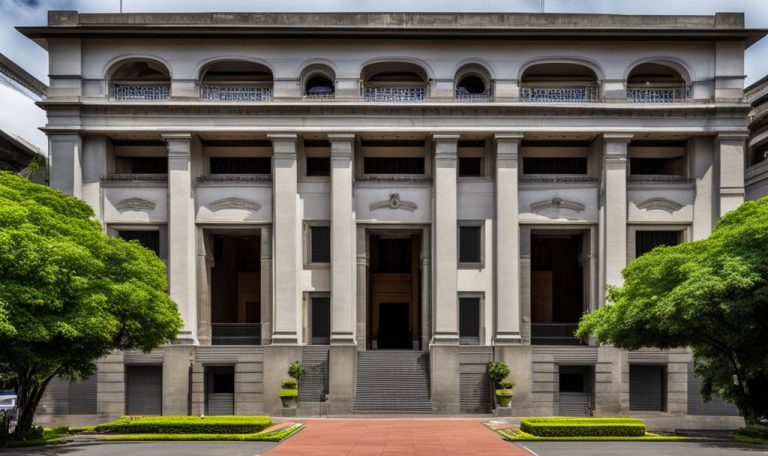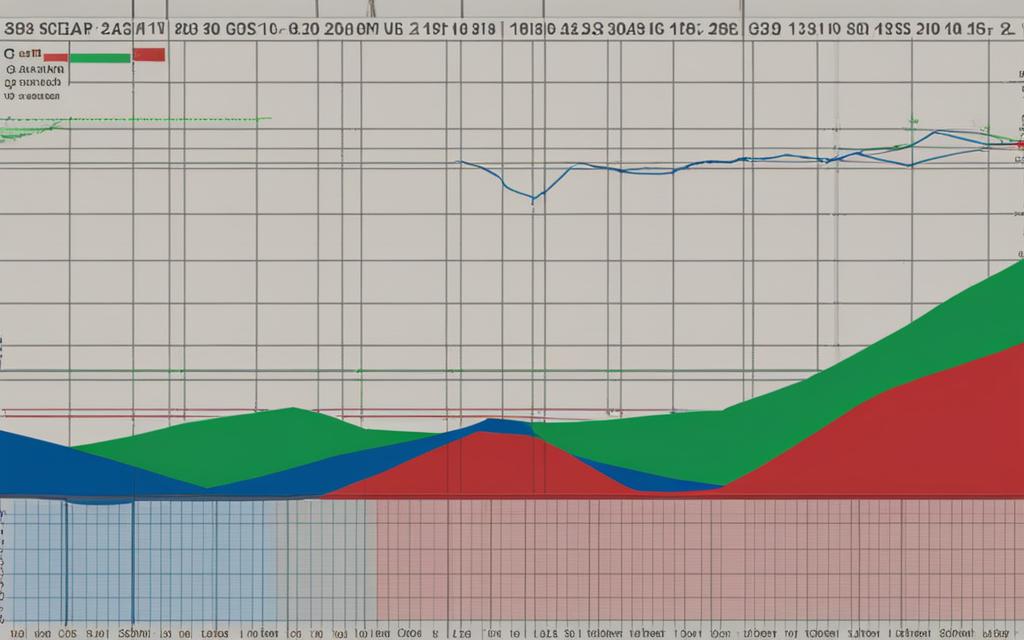The Costa Rican exchange rate against the US dollar has reached its lowest level since February 2014, hitting a 9-year high. The weighted average in the Foreign Exchange Market settled at ¢531.13, reflecting the colón’s strengthened value. This surge in the exchange rate can be attributed to various factors, including the resurgence of the tourism sector, progress in exports, and direct investment inflows.
Key Takeaways:
- The Costa Rican exchange rate has reached a 9-year high against the US dollar.
- The increase in value is attributed to factors such as the resurgence of the tourism sector, progress in exports, and direct investment inflows.
- The colón’s appreciation raises concerns about the impact on companies’ financial health and national competitiveness.
- Business leaders suggest an ideal exchange rate between ¢540 and ¢550, while others anticipate stabilization between ¢520 and ¢540 by year-end.
- The Central Bank of Costa Rica actively manages the exchange rate and intervenes when necessary to maintain stability.
High Volume of Dollar Transactions
On the day when the Costa Rican exchange rate hit a 9-year high against the US dollar, there was also a significant surge in the volume of dollar transactions. A total of 272 exchanges took place, amounting to over $132 million in transactions. This indicates a strong demand for dollars in the market, reflecting the overall economic activity in Costa Rica.
The high volume of dollar transactions is a clear indicator of the importance of the currency exchange market in Costa Rica. It demonstrates the level of international trade, investment, and financial transactions taking place in the country. The exchange rate plays a crucial role in facilitating these transactions and determining the value of the colón against the US dollar.
This increase in transaction volume also highlights the need for individuals and businesses to closely monitor and analyze the Costa Rica exchange rate news. Understanding the trends and fluctuations in the currency exchange market can help make informed decisions regarding foreign currency transactions and financial planning.
| Exchange Rate | Number of Transactions | Total Amount |
|---|---|---|
| USD to CRC | 272 | $132 million |
Table: High Volume of Dollar Transactions
Varying Exchange Rates Offered by Banks
When it comes to exchanging dollars in Costa Rica, the rates offered by different banks can vary. This means that if you are looking to convert your US dollars into Costa Rican colón, it’s important to shop around and compare rates before making a decision.
For example, Banco Nacional offers a rate of ¢534, while Banco de Costa Rica (BCR) offers ¢535, and Banco Popular offers ¢536. Other banks may offer rates between ¢537 and ¢540. These rates are influenced by the central bank’s exchange rate policy and the availability of foreign currency in the market.
It’s worth noting that the rates mentioned here are subject to change and may not represent the current rates at the time of reading. Additionally, banks may charge fees or commissions for currency exchange, so it’s important to consider these factors as well.
| Bank | Exchange Rate (USD to CRC) |
|---|---|
| Banco Nacional | ¢534 |
| Banco de Costa Rica (BCR) | ¢535 |
| Banco Popular | ¢536 |
| Other Banks | ¢537 – ¢540 |
When planning your currency exchange, it’s advisable to check with multiple banks to find the best rate and to inquire about any additional fees or charges that may apply. By doing your research and being informed, you can ensure that you get the most out of your currency exchange in Costa Rica.
Ideal Exchange Rate and Predictions
The recent appreciation of the Costa Rican colón against the US dollar has generated discussions about the ideal exchange rate for the country’s currency. The President of the National Chamber of Tourism (CANATUR) suggests that an ideal exchange rate would be between ¢540 and ¢550. This range is believed to strike a balance between supporting the competitiveness of the tourism sector and maintaining a favorable environment for exporters.
On the other hand, business leaders anticipate the exchange rate to stabilize between ¢520 and ¢540 by the end of the year. This prediction is based on a survey conducted by the Costa Rican Union of Chambers and Associations of the Private Business Sector (Uccaep), which takes into account various economic factors and market trends.
It is important to note that exchange rate predictions are subject to uncertainties and can be influenced by several factors. Changes in global economic conditions, fluctuations in the forex market, and the Central Bank’s interventions all play a role in determining the future path of the exchange rate.
| Predicted Exchange Rate Range | Source |
|---|---|
| ¢540 – ¢550 | President of CANATUR |
| ¢520 – ¢540 | Business leaders surveyed by Uccaep |
These predictions provide insights into the expectations of key stakeholders in the Costa Rican economy. Monitoring the exchange rate and its potential impact on various sectors will be crucial for businesses and policymakers alike.

Central Bank Intervention and Dollar Supply
The Central Bank of Costa Rica (BCCR) plays a crucial role in managing the exchange rate and ensuring stability in the forex market. In response to the recent appreciation of the Costa Rican colón against the US dollar, the Central Bank has been actively intervening to regulate the market and maintain a balance between supply and demand.
The excess supply of dollars within the country has been a key driver of the colón’s recent appreciation. Factors such as the drop in oil prices and increased investor interest in Costa Rica have contributed to this surplus. To address the situation, the Central Bank has been acquiring dollars when necessary, injecting them into the market to stabilize the exchange rate.
The Central Bank’s intervention aims to prevent excessive volatility in the exchange rate, which can have significant implications on the country’s economy. By managing the supply of dollars, the Central Bank seeks to ensure that the exchange rate remains at a sustainable level, promoting financial stability and supporting the competitiveness of Costa Rican businesses.
| Impact of Central Bank Intervention | Importance of Dollar Supply |
|---|---|
| The Central Bank’s intervention helps maintain stability in the forex market, preventing sudden fluctuations in the exchange rate. | Adequate dollar supply is crucial for maintaining the country’s import-dependent economy and supporting the business activities of export-oriented companies. |
| By regulating the exchange rate, the Central Bank mitigates the risks associated with currency depreciation, which can potentially lead to inflationary pressures. | Insufficient dollar supply can lead to a shortage of foreign currency, causing difficulties for businesses engaging in international trade. |
| The Central Bank’s intervention also helps protect the financial health and competitiveness of Costa Rican companies that rely on stable exchange rates for their operations and planning. | Stable dollar supply supports the tourism sector by ensuring easy access to foreign currency for travelers visiting Costa Rica. |
The Central Bank’s continued commitment to managing the exchange rate and ensuring a stable forex market reflects its dedication to fostering a favorable business environment and sustaining the country’s economic growth. By closely monitoring market dynamics and assessing the impact of various factors, including the availability of dollars, the Central Bank plays a vital role in shaping the exchange rate and promoting overall financial stability.

Benefits and Implications of Exchange Rate Movement
The recent appreciation of the Costa Rican colón against the US dollar has both benefits and implications for the country’s economy and its citizens. Let’s examine how this exchange rate movement can impact different stakeholders:
For Consumers
One of the immediate benefits of a stronger colón is the potential reduction in prices for imported goods. Many products in Costa Rica’s supermarkets are imported, and a stable exchange rate helps to maintain the cost of living for families. With a favorable exchange rate, consumers can experience lower prices and potentially save on their everyday expenses.
For Debtors and Importers
The strengthening of the colón can also benefit debtors and importers. If their debts or payments are denominated in US dollars, a higher value of the colón means they will need to pay less in local currency to fulfill their obligations. This can provide some relief to individuals and businesses who have outstanding debts or engage in importing goods.
Challenges for Companies
While consumers and certain sectors may benefit from a stronger colón, it can pose challenges for companies in Costa Rica. A higher value of the local currency can make the country’s exports more expensive, potentially impacting the competitiveness of businesses that rely on foreign markets. Additionally, companies that have loans or debts denominated in US dollars may face increased financial burdens as the value of the colón rises.
It is important for businesses to carefully manage their finances and adjust their strategies in response to exchange rate movements to mitigate potential risks and maximize opportunities.
| Stakeholder | Impact |
|---|---|
| Consumers | Potential reduction in prices for imported goods |
| Debtors and Importers | Lower payments or debts in local currency |
| Companies | Challenges in export competitiveness and increased financial burdens |
Long-Term Outlook and Factors Influencing the Exchange Rate
Analysts have provided a positive forecast for the Costa Rican exchange rate in the coming weeks. Several factors are expected to contribute to the continued strength of the colón against the US dollar. These factors include the attractive interest rates offered by Costa Rica, the steady increase in tourism, the recent approval of Eurobonds, and the continued supply of dollars in the market.
The attractive interest rates in Costa Rica have drawn the attention of foreign investors, who are seeking higher returns on their investments. This increased demand for colones has contributed to the strengthening of the currency. Additionally, the steady growth in the tourism sector has led to an influx of foreign currency, further bolstering the colón’s value.
Furthermore, the recent approval of Eurobonds by the Costa Rican government has provided a boost to the country’s foreign currency reserves. This increased supply of dollars has helped maintain the colón’s strength. With the Central Bank closely monitoring these economic factors, it is expected that the exchange rate will remain favorable for the colón in the foreseeable future.
Factors Influencing the Exchange Rate
- The attractive interest rates in Costa Rica
- The steady increase in tourism
- The recent approval of Eurobonds
- The continued supply of dollars in the market
Long-Term Outlook
Considering these factors, analysts anticipate that the US dollar exchange rate will continue to remain low and the colón will maintain its strength against the greenback. However, it is important to note that the forex market is dynamic and can be influenced by various external factors. The Central Bank will continue to monitor the market closely and intervene if necessary to maintain stability.
| Factors | Influence |
|---|---|
| Attractive interest rates in Costa Rica | Increased demand for colones |
| Steady increase in tourism | Influx of foreign currency |
| Recent approval of Eurobonds | Boost to foreign currency reserves |
| Continued supply of dollars in the market | Maintains colón’s strength |
Monetary Policy and Exchange Rate Stability
The Central Bank of Costa Rica (BCCR) plays a crucial role in maintaining exchange rate stability through its monetary policy decisions. As of now, the BCCR does not anticipate any changes to its monetary policy rate until the next revision in June. This indicates that the exchange rate between the Costa Rican colón and the US dollar will likely remain stable in the short term.
The BCCR closely monitors the dynamics of the foreign exchange market to ensure stability. If necessary, the central bank will intervene by acquiring or selling dollars to balance the supply and demand in the market. Through its interventions, the BCCR aims to prevent excessive fluctuations in the exchange rate that could negatively impact the economy.
The stability of the exchange rate is essential for Costa Rica’s economic performance. It provides certainty for businesses engaged in international trade and helps manage inflationary pressures. A stable exchange rate also promotes investor confidence and fosters economic growth by attracting foreign direct investment.
Conclusion
The recent appreciation of the Costa Rican colón against the US dollar signifies a shift in the country’s economic landscape. With increasing tourism, progress in exports, and direct investment inflows, there has been an excess supply of dollars in Costa Rica. As a result, the colón’s value has risen, reaching its lowest level since February 2014, settling at ¢531.13 in the Foreign Exchange Market.
This exchange rate trend has its benefits for consumers, as it can lead to reduced prices for imported goods. However, it poses challenges for companies’ financial health and national competitiveness. The rise in the colón’s value has raised concerns among business leaders regarding the impact on businesses’ profitability and the country’s ability to compete in the global market.
The Central Bank of Costa Rica (BCCR) has been actively managing the exchange rate to maintain stability. By acquiring dollars when necessary, the BCCR aims to stabilize the market. However, the excess supply of dollars, driven by factors such as the drop in oil prices and investor interest in Costa Rica, has contributed to the colón’s recent appreciation. The BCCR will continue to monitor the market dynamics and economic factors that influence the exchange rate to determine its monetary policy.
FAQ
What is the current exchange rate between the Costa Rican colón and the US dollar?
The weighted average exchange rate in the Foreign Exchange Market is ¢531.13 against the US dollar.
What is causing the appreciation of the Costa Rican colón?
The colón’s appreciation is attributed to factors such as the excess supply of dollars within the country, driven by the resurgence of the tourism sector, progress in exports, and direct investment inflows.
How does the exchange rate affect businesses?
The strengthening colón can pose challenges to companies’ financial health and national competitiveness.
What is the demand for dollars in the market?
On the same day, there were over $132 million in transactions, marking the highest volume for the year, indicating a strong demand for dollars.
Why do banks offer varying exchange rates?
Banks’ exchange rates are influenced by the central bank’s exchange rate policy and the availability of foreign currency in the market.
What is the ideal exchange rate suggested by business leaders?
The President of the National Chamber of Tourism suggests an ideal exchange rate between ¢540 and ¢550, while other business leaders anticipate the rate to stabilize between ¢520 and ¢540 by year-end.
How is the Central Bank managing the exchange rate?
The Central Bank is actively managing the exchange rate by acquiring dollars when necessary to stabilize the market.
What are the benefits and implications of the exchange rate movement?
The decrease in the exchange rate has benefits for consumers, debtors, and importers who can experience reduced prices. However, it also poses challenges to companies’ financial health and competitiveness.
What factors are influencing the exchange rate in the long term?
Factors such as attractive interest rates, increase in tourism, approval of Eurobonds, and the supply of dollars are key drivers of the exchange rate.
Will the exchange rate remain stable in the short term?
The Central Bank’s monetary policy rate is not expected to change until the next revision in June, indicating that the exchange rate will likely remain stable. However, the dynamics of the forex market may influence the rate, and the Central Bank will intervene if necessary to maintain stability.



